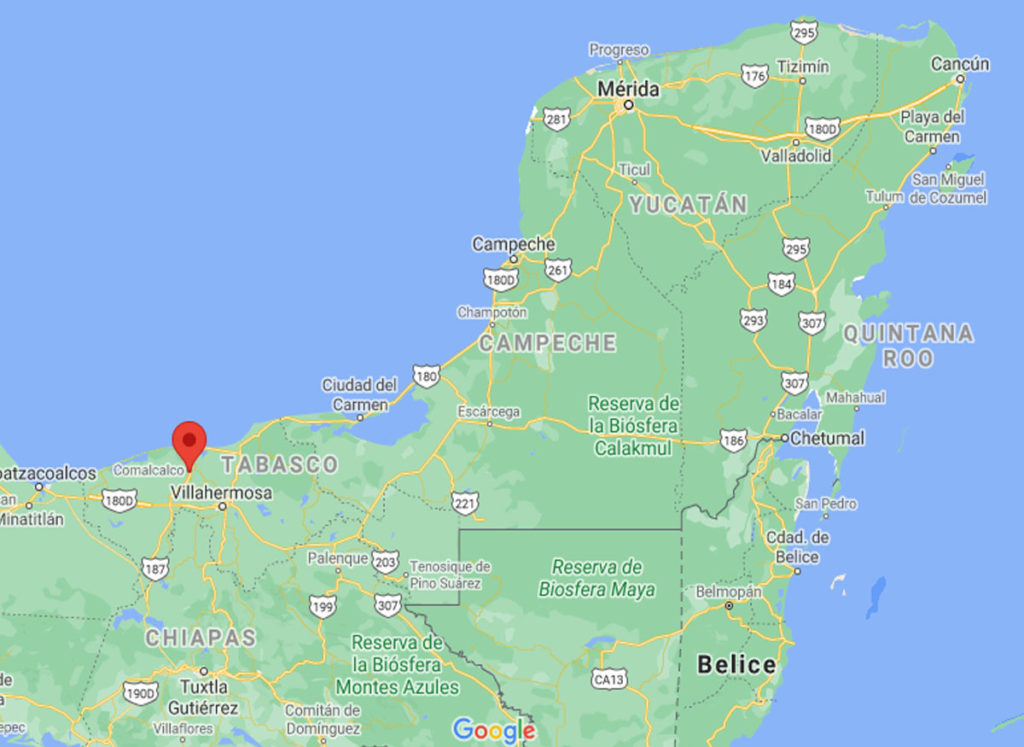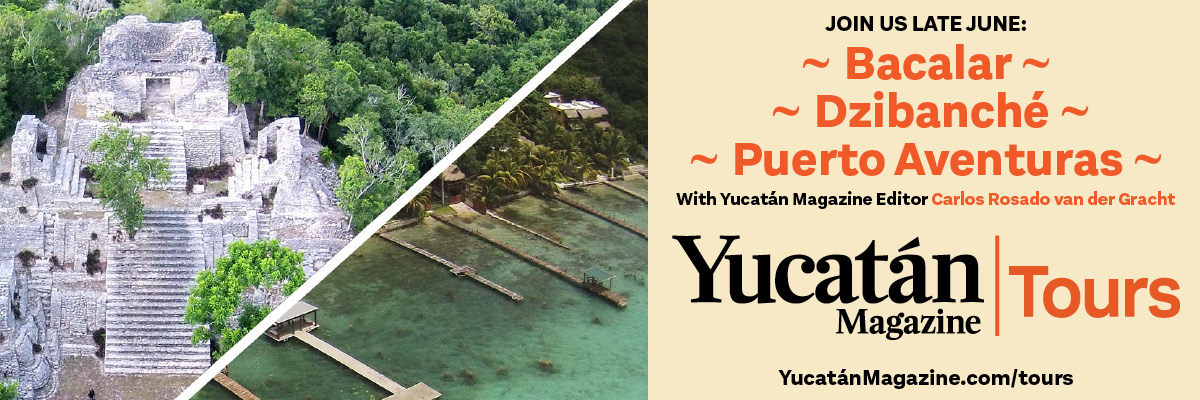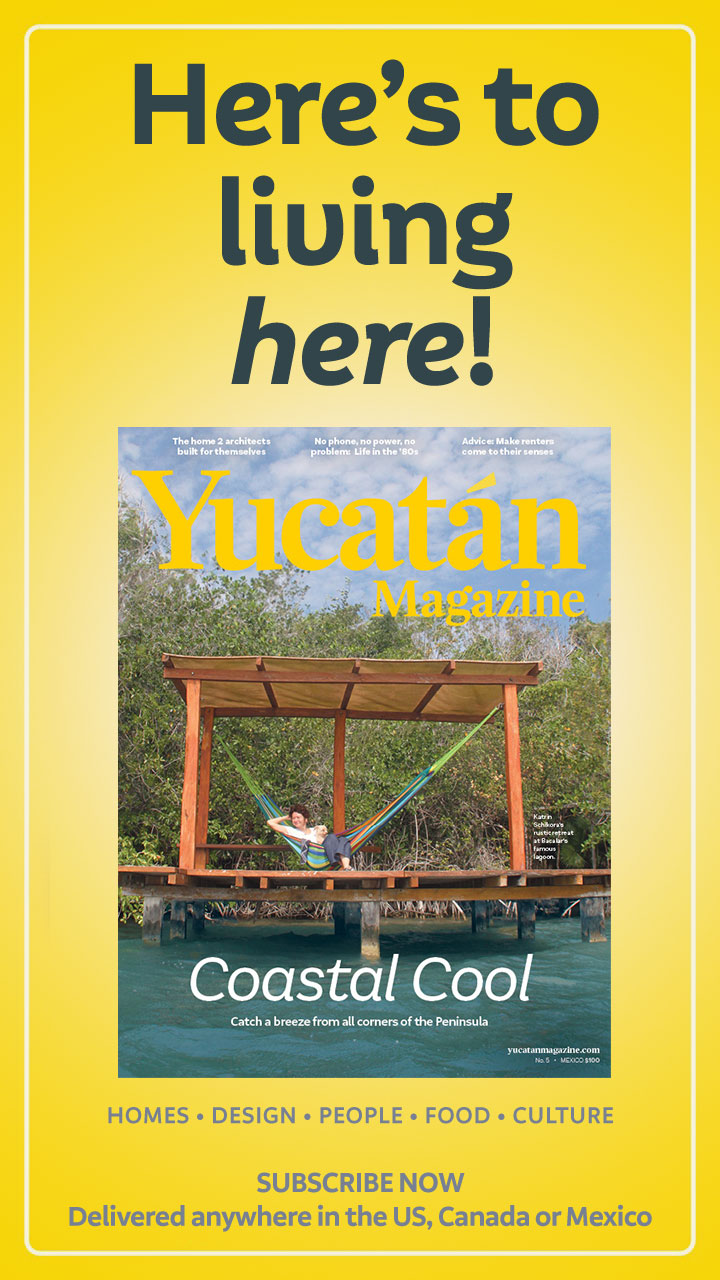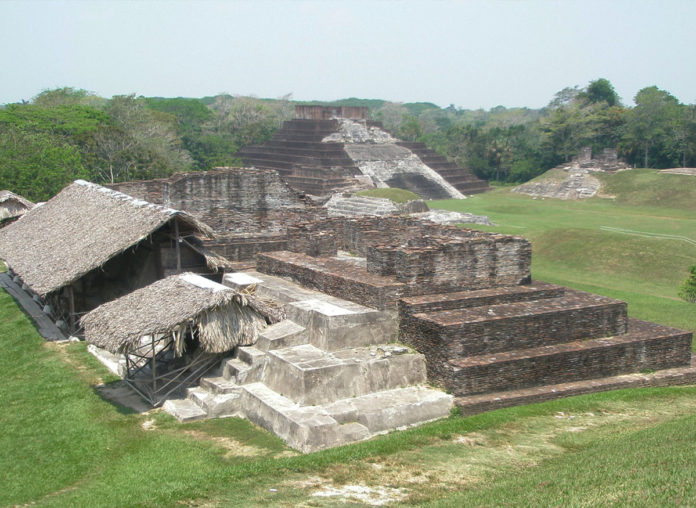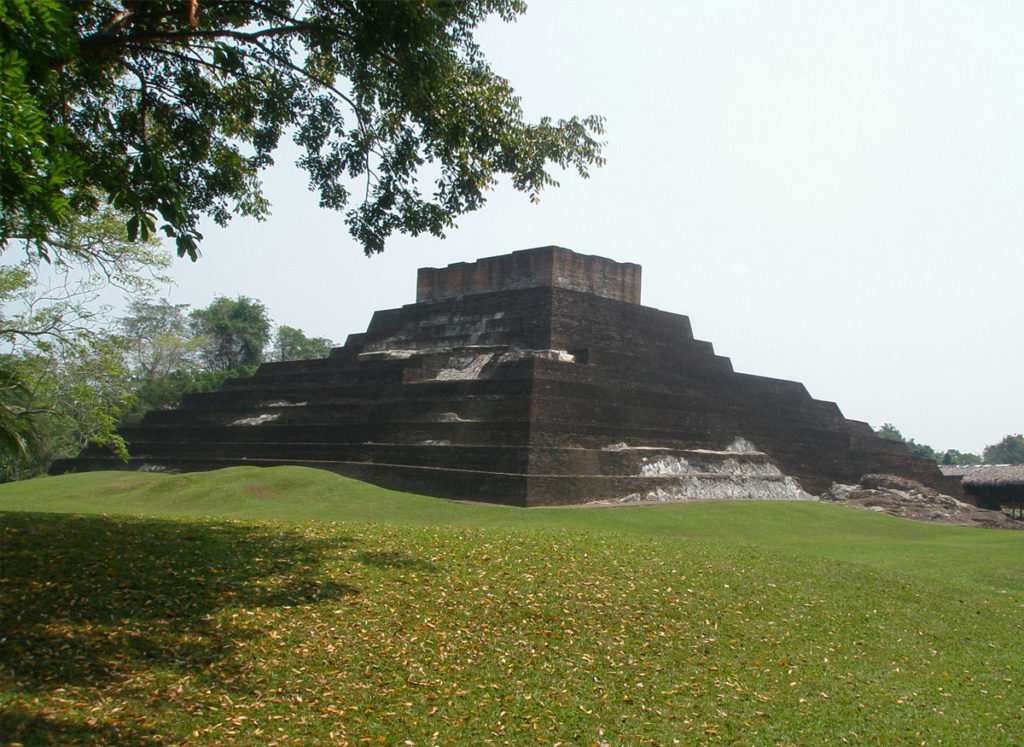
Several details make Comalcalco a real oddball in the context of Maya cities.
For one, the ancient site in Mexico’s Tabasco state was likely the westernmost major Maya settlement. The name Comalcalco is not Mayan but Nahuatl and means house of the comales — a smooth, flat griddle typically used in Mexico. However, the site’s original name was Joy Chan, meaning “round sky.”
But what makes Comalcalco stand apart is the materials from which the city was constructed. Unlike virtually every other Maya city or settlement, Comalcalco was built using bricks rather than limestone masonry. The city is near the coast in an area full of swamps and mangroves, where workable stone is in short supply and difficult to quarry. The bricks are irregular in size and were made by cutting large sections of clay instead of using molds. Visitors notice that many contemporary structures in the surrounding area still use this technique.
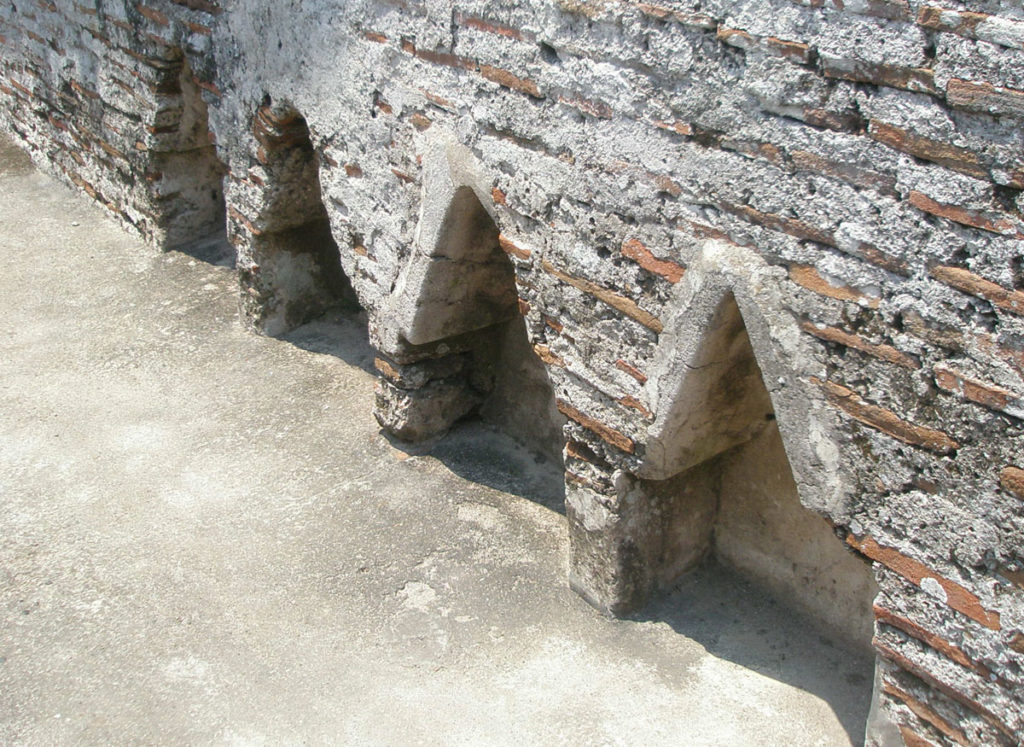
The city’s foundation date is not known, but it is believed that Comalcalco reached its greatest splendor sometime in the 5th century CE and was completed along with other major cities such as Palenque and Yaxchilán.
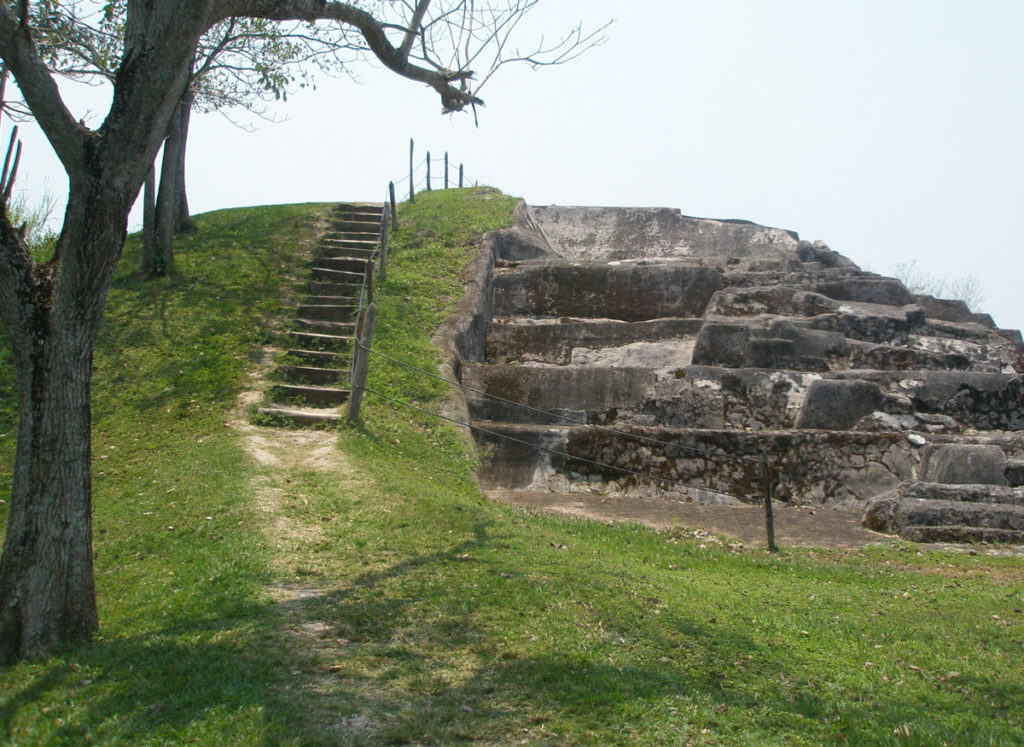
The clay bricks used in constructing the city’s many structures give Comalcalco a unique look. However, an architectural style similar to Palenque’s was apparently superimposed onto its temples. These modifications were likely made during a time of a close alliance or perhaps occupation by Palenque. Evidence suggests that following the conquest of Palenque by Tonina, the city’s elite fled to Comalcalco to continue their rule in exile. Later in its history, Comalcalco came to be dominated by Nahua groups migrating from central Mexico — as evidenced by the Nahuatl name the city is known by today.
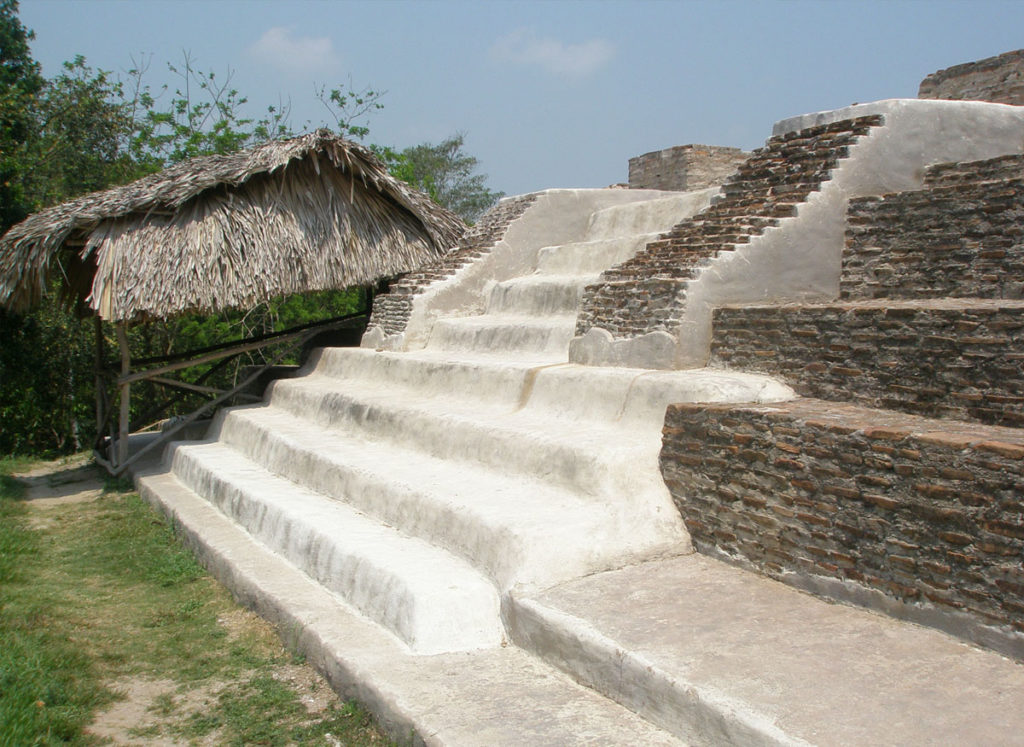
The first structure to be seen when entering the site is the large pyramid known simply as Temple I. This structure has a central stairway that rises 20 meters and passes through 10 tiers in the Talud-tablero style of Teotihuacan influence. Like many other notable structures at the site, most of the stucco on this temple has been lost. The good news is that this allows us to appreciate its unique brick construction.
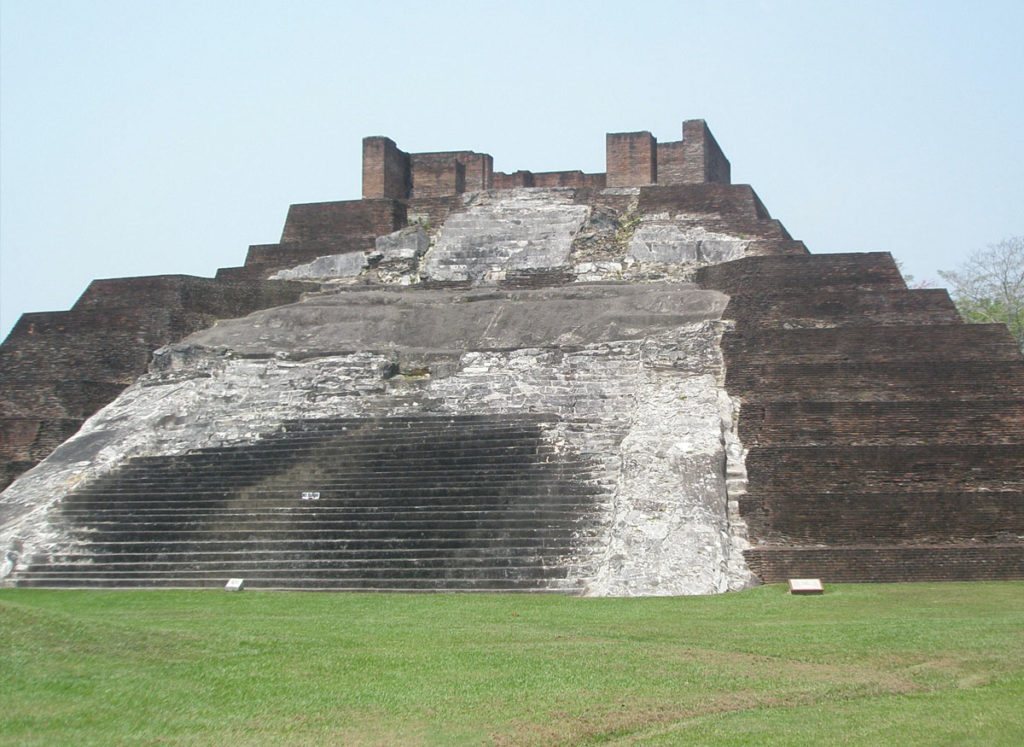
At the top of the temple, we can observe several large pillars and walls that once supported a large sanctuary chamber.
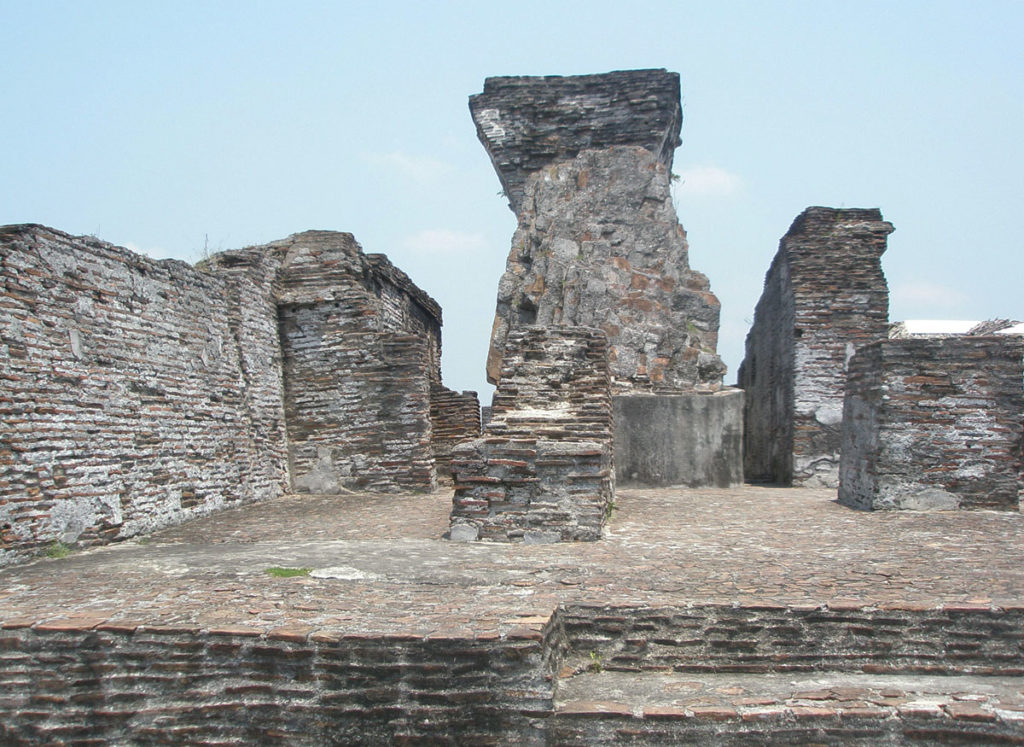
Other notable constructions include Temples VI and VII, which sit on a 35-meter-tall artificial platform known as the Great Acropolis.
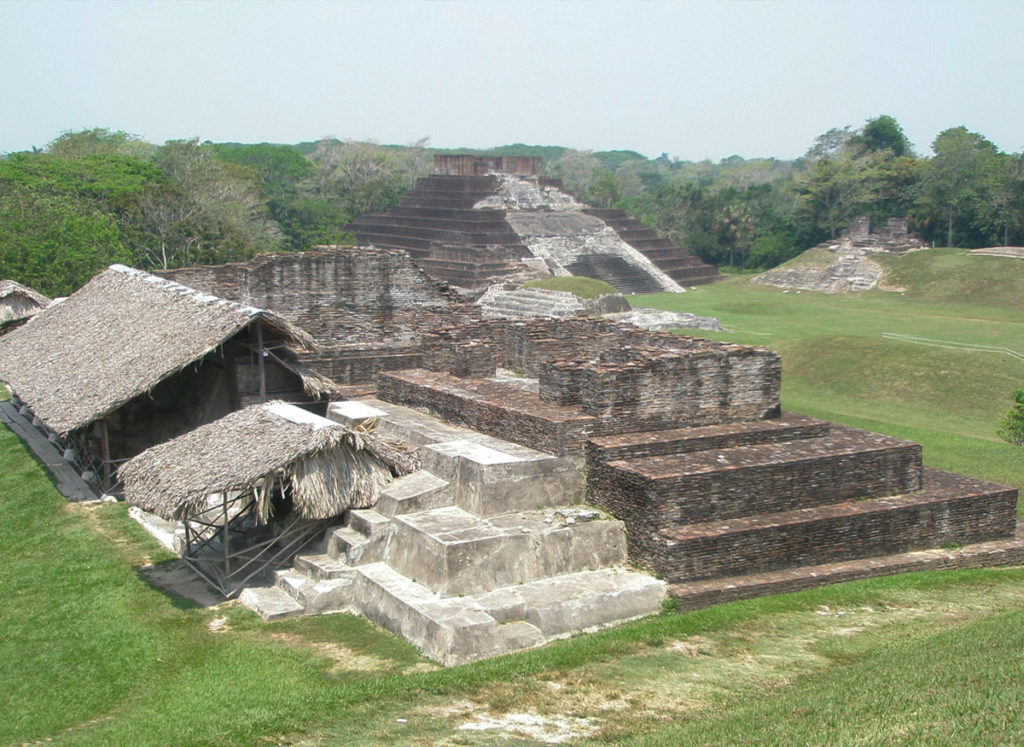
The Acropolis and its structures are well known for their elaborate altars and stucco work.
The Great Acropolis is also notable for its extensive funerary vaults and the discovery of the largest burial ground found in the region to date. Archaeologists discovered three chambers that contained the skeletal remains of 116 high-ranking individuals, most of whom exhibited cosmetic features associated with Mayan elites, such as cranial deformation and teeth filling and incrustations. The burials are thought to date to either the late classic period (8th century CE) and also included 50 ceramic funerary urns.
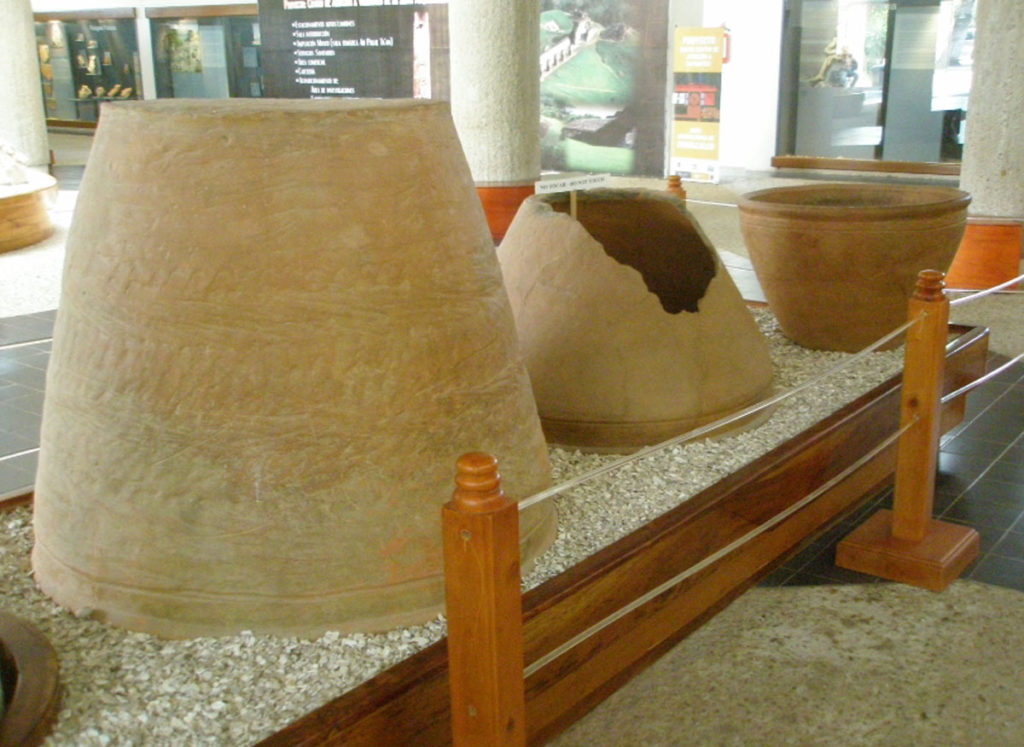
Adjacent to the archaeological site is a great museum that houses artifacts from the site. The quality and state of preservation of these artifacts are stunning. Visitors can examine sculptures of marine animals and birds, funerary urns, and masks. Additional sculptures depict the city’s elite.
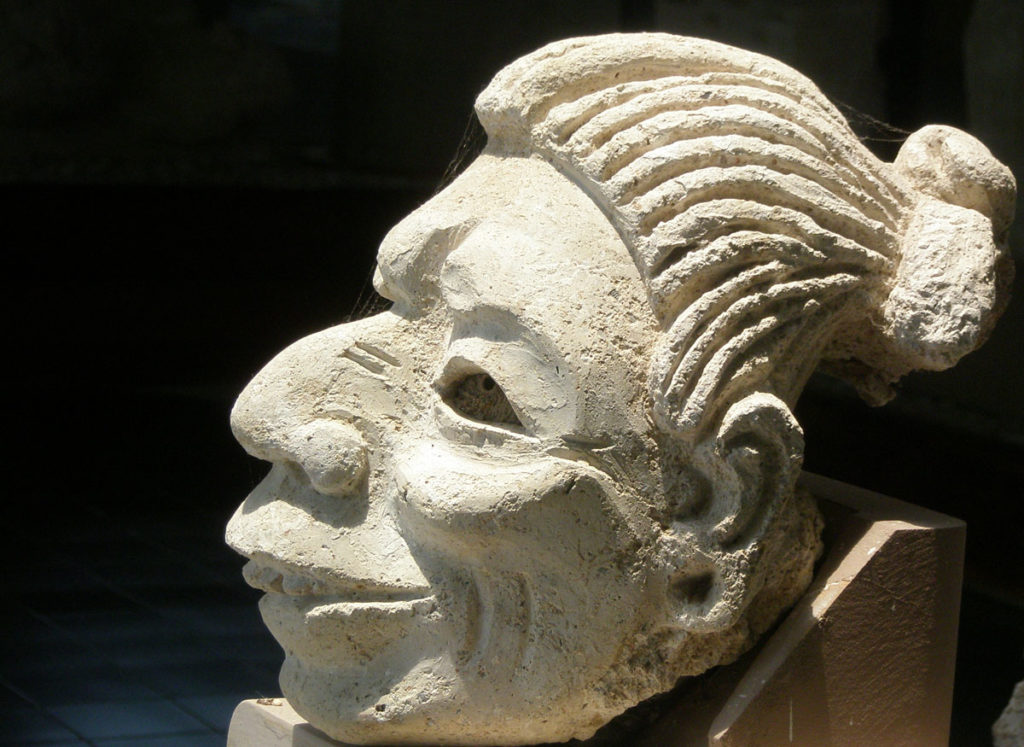
The archaeological site is located well inside the modern city of the same name and is walkable from the local bus station terminal. However, taking an organized tour is likely a better option. Hotels in nearby Villahermosa will likely have information on tour companies organizing day trips. Since the site does not receive many visitors — especially international ones — you may have to hire a private driver. Renting a car is not advisable.
If you go
As with all archaeological sites in Mexico, bringing food or drink other than water is prohibited. The entrance fee is 65 pesos Monday through Saturday. On Sunday, admittance is free for Mexican nationals and foreign residents with official ID.
